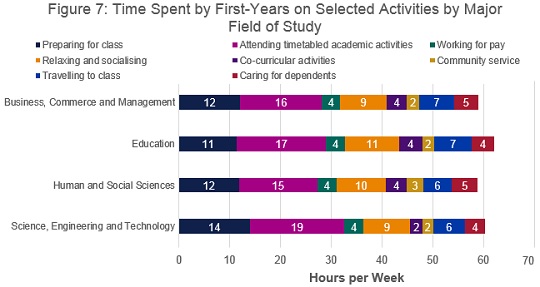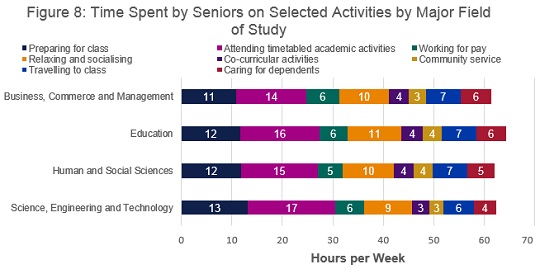SASSE 2014
Amount of Writing by Major Field of Study
Table 1 summarises the average amount of assigned writing by major field of study completed during the academic year of 2014.
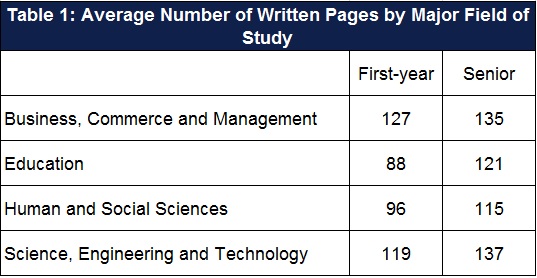
Engagement with Lecturers by Gender and Academic Status
Table 2 represents the percentage of students who frequently (Very often or Often) engaged with lecturers in various types of activities arrayed by gender and academic status information. Generally, senior students tend to interact with staff more than first-years. Male students appear to be more comfortable interacting with staff than female students.
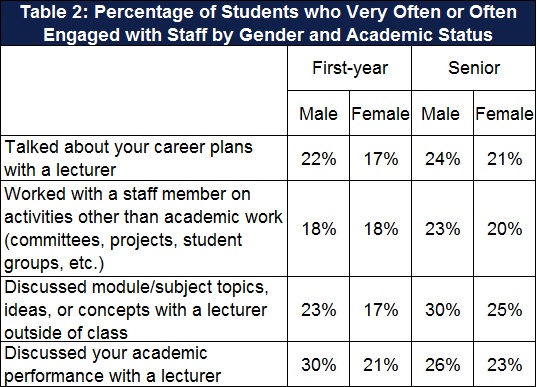
Participation of Senior Students in High-Impact Practices by Selected Characteristics
Because of their positive effects on student learning and retention, undergraduate opportunities such as student societies, service-learning, research with staff and practical work are called high-impact practices (Kuh, 2008). High-impact practices share several traits: They demand considerable time and effort, provide learning opportunities outside of the classroom, require meaningful interactions with staff and students, encourage interaction with diverse others, and provide frequent and meaningful feedback. Participation in these activities can be life-changing.
Table 3 displays the percentage of senior students who participated in selected high-impact practices by several characteristics. From these results, you can compare participation in high-impact practices across a variety of student characteristics.
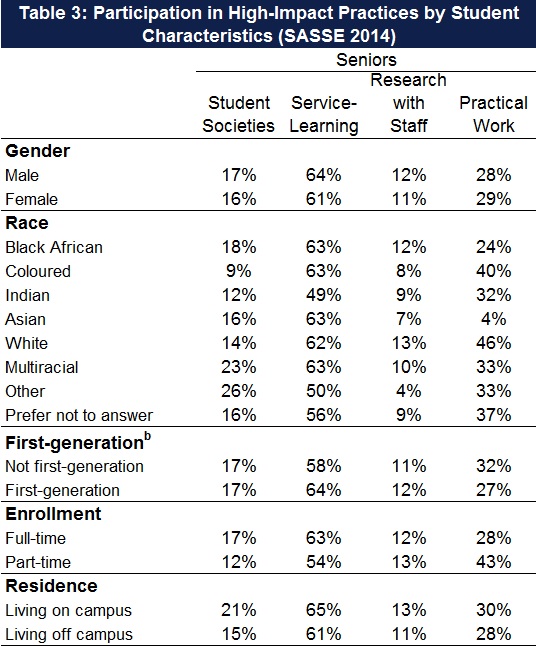
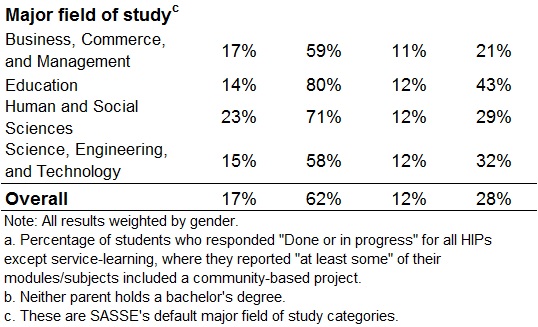
The Relationship of Residence Life with Selected Engagement Measures
Successful residence life programmes create an environment that promotes "seamless learning environments" (Kuh, 1996) with both curricular and co-curricular learning and engagement. Residence life staff may use SASSE data to assess how well their programmes and facilities foster important forms of engagement, including module/subject learning, social integration, experiences with diversity, and a supportive campus environment. Figures 1 to 6 compare students who live on campus with those living off campus on selected measures of engagement, diversity, and perceptions of the campus environment.
Results from SASSE 2014 indicate that students living on campus spent more hours per week than their off-campus counterparts in each type of activity: preparing for class, participating in co-curricular activities, and relaxing and socialising.
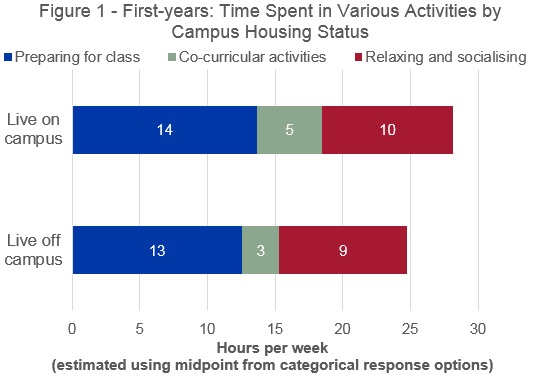
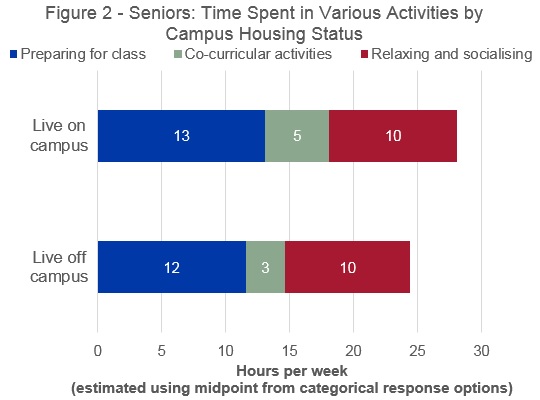
First-year students living on campus had more discussions with students of diverse backgrounds than those living off campus, with the biggest difference being with discussions with people of different economic backgrounds. While senior students living on and off campus had similar amounts of discussions with people from different economic backgrounds and with different religious beliefs, senior students living on campus had more conversations with students from a different economic background than their own. On the contrary, the off-campus senior students had more discussions with students of different race or ethnicity than their own.
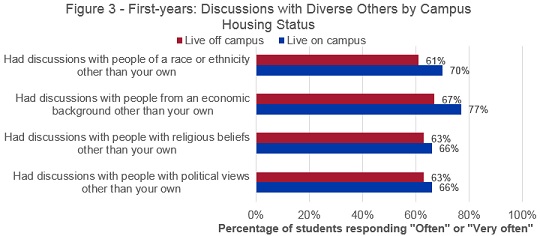
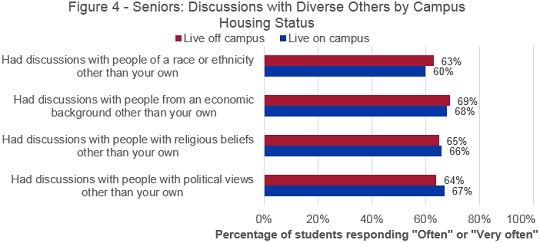
Finally, on campus students, more than their peers who lived off campus, said their institution substantially emphasised help for students to persist and learn through academic support programmes, encouraged diverse interactions and provided social opportunities, campus activities, health and wellness, and support for non-academic responsibilities. The biggest difference between on- and off-campus first-years is regarding their perception of the emphasis that the institution places on attending campus events and activities with 60% of on-campus first-year students who responded 'Very much' or 'Quite a bit' compared to 42% of off-campus students. For senior students the same gap between on- and off-campus students can be observed for this item. On-campus senior students also perceived more emphasis on attending events that address important issues than their off-campus counterparts.
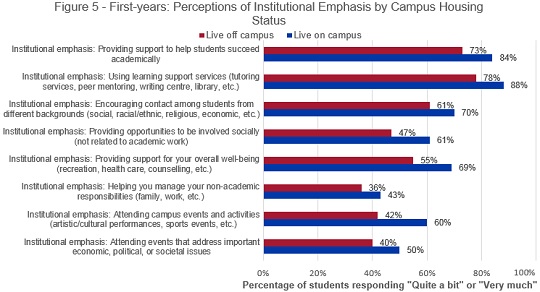
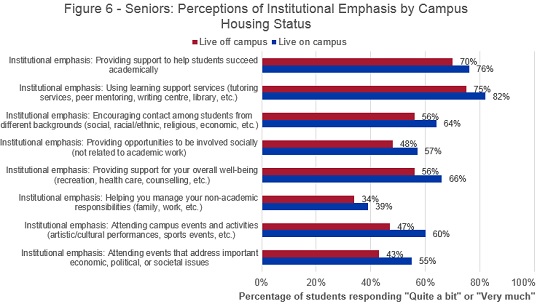
Time Spent on Selected Activities by Major Field of Study
Understanding how students allocate their time among academic work, employment, and other activities and commitments offers insight into both student support needs and programmatic differences in expectations and requirements.
Figures 7 and 8 show the average amount of time students in SASSE 2014 spent on eight activities across four major fields of study (hours per week are estimated using the midpoint from the categorical response options). First-year students from all four fields of study spent the same amount of time working and similar amounts of time doing community service and caring for dependents. However, there are some differences in the hours that the different fields of study spent on preparing for class and attending timetabled academic activities. First-year Education students spent 11 hours per week preparing for class while those who are in the field of Science, Engineering, and Technology spent 14 hours. First-years from the latter group also spent the most hours per week on attending timetabled academic activities (19 hours) with students from the Human and Social Sciences field of study who spent only 15 hours.
While seniors in different fields of study spent their time in similar ways across a few activities (co-curricular activities, community service, and travelling to class), they varied more in time spent attending timetabled academic activities, ranging from 14 hours per week for Business, Commerce, and Management students to 17 hours per week for students in the Science, Engineering, and Technology field of study.
